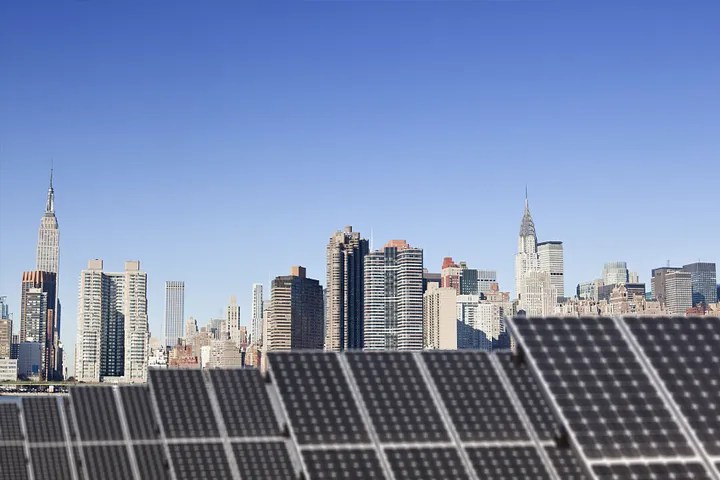
Less than a year after they purchased their first home, Daphany Rose Sanchez and her family were on the roof, surrounded by water, waiting to be rescued.
Sanchez and her family, who had moved from public housing in Brooklyn to a single-family home on Staten Island, were among the thousands of people who faced the devastation of Hurricane Sandy, which caused over $50 billion in damage in the United States.
Increasingly volatile weather, including floods and extreme heat, threatens all of us. But low-income communities are especially vulnerable; many, like Sanchez and her family, find that the most affordable homes are often in areas with considerable environmental risks.
At an event earlier this year, the New York Fed’s Community Development team heard from Sanchez and others who are working to help low-income communities and communities of color adapt to the extremes that come with a changing climate. In particular, these advocates are focusing on flood resiliency, rural electrification, and water supply in times of drought.
Here are some of the top ideas discussed at the conference:
- Organizing communities against pollution: After the North River Wastewater Treatment Plant opened in West Harlem, Peggy Shepard and other community members noticed that odors and emissions from the plant were making people sick. Shepard and around 100 community residents protested the plant, and then partnered with the Natural Resources Defense Council to sue New York City. They secured a court mandate forcing the plant to reduce noxious emissions and won a $1.1 million settlement to support community initiatives in West Harlem. Shepard, who worked on political campaigns and co-founded WE ACT for Environmental Justice, said it is an example of how advocacy can lead to results. “I understood that without that advocacy in our community, we would continue to be a dumping ground, and we would not get the benefits that were prone to other communities.”
- Building community resilience: When Caleb Stratton moved to Hoboken in 2011, he was unaware his apartment was in a coastal floodplain. In fact, 75% of Hoboken falls within a coastal floodplain, and the area experienced severe flooding during Hurricane Irene and Hurricane Sandy. Stratton, who became the city’s chief resiliency officer, said the federally funded Rebuild by Design program helped Hoboken reduce flood risks by building sea walls, levees, and gates. The city is also building a non-carbon municipal microgrid, which will power critical facilities during emergencies and address everyday constraints on the existing power system.
- Improving community infrastructure: Dr. Kim Waddell, project lead for the U.S. Virgin Islands Hazard Mitigation and Resilience Plan, is working in partnership with the USDA to develop strategies and resources for water storage, ensuring farmers and people who depend on rainwater collected from roof harvesting are prepared for droughts. Waddell also works with local government to improve drainage in coastal towns where sewage systems are underwater due to rising sea levels.
- Generating power at the community-level: In the aftermath of Hurricanes Irma and Maria, more than 1.5 million Puerto Ricans went without power for more than 100 days. PREPA, Puerto Rico’s public utility authority, was in bankruptcy, making it harder for the Island to recover. Jorge Gaskins, director of community relationships at Barrio Eléctrico, helps communities install solar panels and batteries for each home, and trains people to service the systems in their communities. Gaskins said that the program needs more financing from the public sector. The grid “is considered a social investment,” he said, “and we want the community-based rooftop distributed solar energy to also be considered a social investment.”
- Protecting communities during market transformations: A few months after Hurricane Sandy, Daphany Rose Sanchez worked in partnership with professors at NYU Tandon School of Engineering, where she was studying in the sustainable urban environments program, to offer translation services paired with structural engineering and feasibility assessments to communities affected by the storm. She later founded Kinetic Communities Consulting, a minority-and-women-owned benefit corporation that works with utilities and governments to create climate policies and programs aimed at supporting local communities. Sanchez noted that if energy efficiency and renewable technologies (such as energy recovery ventilation, heat pumps, and solar panels) are not correctly sized to a structure, they can be inefficient and unaffordable. Sanchez is calling for increased consumer protections for renters and homeowners in the clean energy market. “We need to incorporate renewables and electrification, but we need to do it in a way that is looking holistically at the people within the built environment,” she said.
While these panelists come from different backgrounds, they have similar goals: protecting their communities from the next storm, converting old buildings to clean energy, and creating jobs in their neighborhoods. Their work offers practical examples of how to prepare for climate-related risks and build a more resilient society.
For a replay of the conference, see Climate Voices from the Frontline: How Communities are Mobilizing.
This article was originally published by the New York Fed on Medium.
The views expressed in this article are those of the contributing authors and do not necessarily reflect the position of the New York Fed or the Federal Reserve System.










